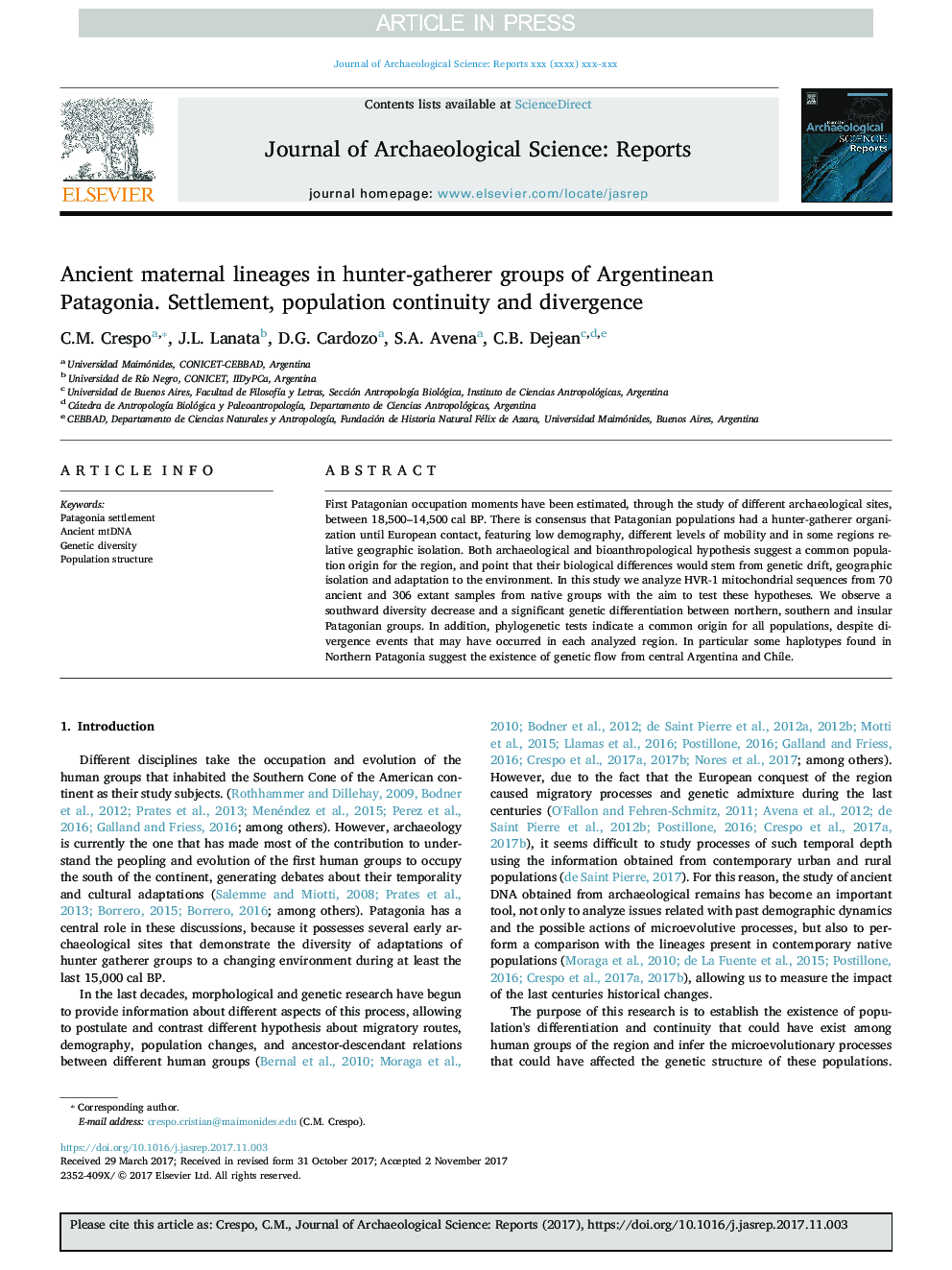| Article ID | Journal | Published Year | Pages | File Type |
|---|---|---|---|---|
| 7444346 | Journal of Archaeological Science: Reports | 2018 | 7 Pages |
Abstract
First Patagonian occupation moments have been estimated, through the study of different archaeological sites, between 18,500-14,500Â cal BP. There is consensus that Patagonian populations had a hunter-gatherer organization until European contact, featuring low demography, different levels of mobility and in some regions relative geographic isolation. Both archaeological and bioanthropological hypothesis suggest a common population origin for the region, and point that their biological differences would stem from genetic drift, geographic isolation and adaptation to the environment. In this study we analyze HVR-1 mitochondrial sequences from 70 ancient and 306 extant samples from native groups with the aim to test these hypotheses. We observe a southward diversity decrease and a significant genetic differentiation between northern, southern and insular Patagonian groups. In addition, phylogenetic tests indicate a common origin for all populations, despite divergence events that may have occurred in each analyzed region. In particular some haplotypes found in Northern Patagonia suggest the existence of genetic flow from central Argentina and Chile.
Related Topics
Social Sciences and Humanities
Arts and Humanities
History
Authors
C.M. Crespo, J.L. Lanata, D.G. Cardozo, S.A. Avena, C.B. Dejean,
